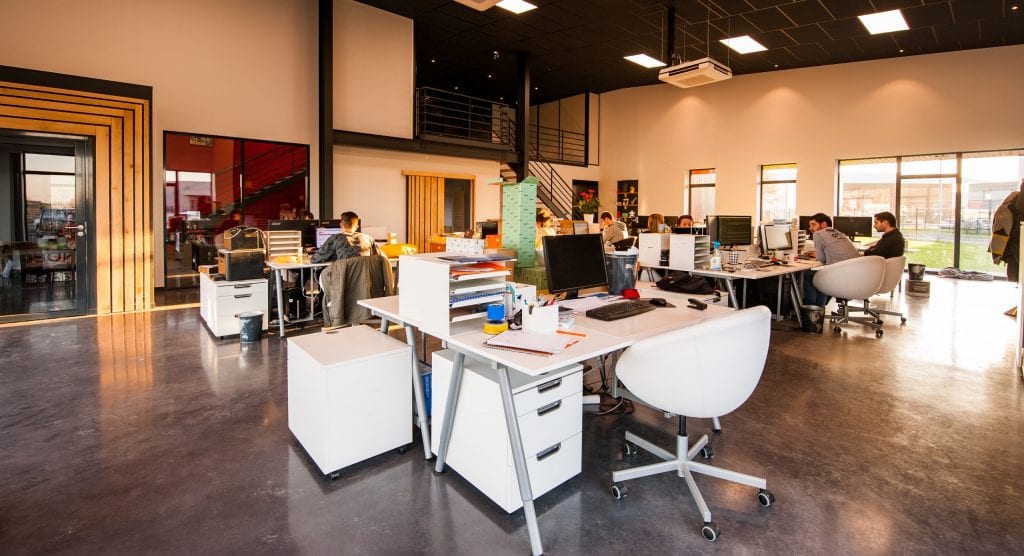The transformed nightclub
An NLI employee used to work at an advertising agency in Texas. It was in a particularly conservative part of Texas (which really says something), but the physical building was in a somewhat more progressive, gentrifying area of a big city. In fact, the building at one point had been a gay nightclub. The founder of the agency bought it, lofted it for some cool-looking meeting spaces, and moved in his people. The agency grew.
Over time, the founder came to believe that the physical space was a chunk of the culture—cool architecture, pass-bys, kegs, wine in the kitchen that you could access whenever if you were staying productive, and the like. The culture, it was reasoned, was tied deeply to the physical structure that the employees inhabited. This agency even got mentioned in a Wall Street Journal article once.
When the pandemic hit and the founder’s 55 employees had to scurry to their various houses and apartments, he was notably concerned about the impact on culture. Sure, there could be Zoom Happy Hours and whatnot, but it wouldn’t be the same. The relationships would suffer, the innovation would suffer, the ideation would suffer. The physical space was the glue. Right?
Turns out he, like a lot of executives and founders, was wrong in that assumption. Instead, the culture in many ways got better. Five employees created a YouTube discussion on movies and TV shows, which actually became a lead generation tool for the agency. Employees felt more autonomy at home; the founder and his executive team put in No-Video Call Fridays and banned internal video calls (if clients needed them, different story) from 12 PM – 2 PM local. It allowed people to sit with their families, walk outside, run errands, etc.
The former gay nightclub reimagined as a woke architectural marvel of Texan gentrification sat empty, but the culture was thriving.
What gives?
What is culture?
NLI has a specific definition for culture, which is “shared everyday habits.” The way leaders listen (or don’t) to their people. The way meetings are run, where people feel like they can speak up, or not. The speed at which good ideas can flow through an organization. The physical space may nod to the culture—nap pods, dry cleaners on-site, and tiki bar-themed conference rooms all say something about what you want from employees—but it’s not the culture.
One of the main paradoxes of COVID for many was this idea that a digital culture, driven across tech stack and video, can in some ways be more inclusive, and more culturally-benefitting, than our standard Monday – Friday, 9-7, in-cubicles-and-offices culture. More people can be included in the right meetings no matter where they are located. And more people’s voices can be heard when you use the chat function well, so that the best ideas rise to the top of a meeting—not the ideas from the person most confident to speak up.
Many companies have also reported creating a much more uniform culture during COVID, where folks on the East and West Coasts for example worked together more closely than before, and started to work with similar habits when interacting. This is a positive step for both inclusivity as well as culture overall.
What’s happening at the brain level here?
How is all this happening if people are not sitting across from each other? Well, the more closely you are watching someone’s face, the more you are registering their emotional response to events, and you begin to read what is good and bad. Research also shows we learn the habits which make up “culture” mostly unconsciously, and we learn them through observation and mimicry.
Some loose math of relevance here: if you measure the number of hours a week people used to spend looking closely at colleagues’ faces, it might have been say 3 hours a day x 4 people x 5 days = 60 people hours a week.
Now in a world full of back-to-back video calls, it’s 8 hours a day x 10 people x 5 days = 400 people hours a week. In short, in a work from home world, we’re watching other people’s reactions up to 5-7 times more a week than we used to. So the culture is staying stable, and if anything, it is being shared faster.
At the same time, all this attention to other people’s faces is one of the reasons for the “zoomxaustion” (Zoom fatigue) that people feel. The brain is being taxed by watching far more people’s faces up close than ever before, as well as from an awareness that dozens of others are watching us closely all day.
But all that focus on facial cues is creating non-obvious upsides for culture. Not only is the culture not the building, but in a world where people spend a lot of time meeting on digital platforms, the culture is more inclusive, more robust, and more consistent globally.
The next steps, and concerns about hybrid work
The real question now is what will companies do when we start to go back to the building?
I believe the companies that perform best will maintain the upsides of this work-from-home-period, and ensure that people continue to be on platforms, on their own laptop, unless everyone is in a room together. Going back to the days of a few people in a room and others on a phone line not only won’t be a positive for culture, it’s going to be a culture drag. When we can’t see or hear others clearly, we all feel a little anxious, people outside the room feel ignored, the folks who can have a drink together create micro-cultures of their own.
A simple rule to consider? If you want to do the best by your culture, apply the “One virtual, all virtual” rule. In other words, if one person is working from home, you should all be individually on a platform, not expecting that person—not to mention the culture—to suffer.
The culture was never the building, and the more we remember that, the better off we will all be. Whether we’re in Texas, Mumbai, London, or even more so, all of the above.
This article originally appeared in Forbes.






